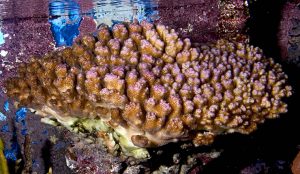Despite our best efforts most reef tank still resemble lagoonal locations, and even then with too high a nutrient concentration. This is especially true if the reef tank contains fish. The main concern for a successful reef tank is to balance consumers with producers, but doing so is difficult. Fish produce waste while algae, for example, consume waste. Most of us who have been reef keepers for a while know this, but maintaining over a long period of time the pristine conditions of a natural coral garden make great demands on the coral gardener. As a result, most of us wind up with a eutrophic lagoon.
One of the nutrients that is hardest to control is phosphate, which exists as inorganic phosphate (PO4), which is difficult to read at low levels, and organic phosphate, which is still more difficult to measure for the average advanced reef keeper. Yet, it is phosphate that is the primary contributor to the eutrophic conditions that a reef keeper who wants to simulate the pristine conditions of the outer reef in Nature needs to maintain at concentrations significantly below 0.1-mg/L.
There is a new product coming on to the market that has a number of respected reef keepers like Greg Schiemer and Mike Paletta excited. I’m using the product myself, and speaking anecdotally the stuff seems to work. I’m referring to ROWAphos. This product was developed in Germany, and I believe is manufactured in Germany. It works best when used in a reverse flow reactor, not passively put in a nylon bag and laid at the bottom of the tank or sump. Check out these internet addresses of two of our major sponsors, both of whom are now carrying ROWAphos:
However, we often get excited by new products, and so much so that sometimes we allow our imaginations to see more than what exists in reality. Therefore, I asked Richard Harker to do a factual analysis of the product, to see if nonbiased instruments reveal what some of us have anecdotally observed in our reef tanks. His product review of ROWAphos should be available next issue.




0 Comments